Mastering the Craft: How to Make a Canvas Frame
Introduction
In the world of art, crafting your canvas frame is an art form in itself. It allows artists to not only customize their canvas size but also to ensure the highest quality for their artwork. This extensive guide will take you through the intricate process of creating a canvas frame, drawing inspiration from valuable resources found on Skillshare and Instructables.
Materials You'll Need:
Before diving into the process, gather the following materials to ensure a smooth canvas frame construction:
- Stretcher bars or wood boards
- A saw (hand saw or miter saw)
- Measuring tape
- Carpenter's square
- Wood glue
- Screws or corner braces
- Screwdriver or drill
- Sandpaper
- Canvas fabric
- Canvas stretcher pliers
- Staples and a staple gun
- Canvas tensioning wedges
Step 1: Measure and Cut the Wood
Begin the canvas frame creation process by measuring and cutting the stretcher bars or wood boards according to your desired canvas size. Precise measurements are essential, as they lay the foundation for a well-constructed frame. Use a saw, such as a miter saw, to ensure clean and straight cuts that meet your specifications.

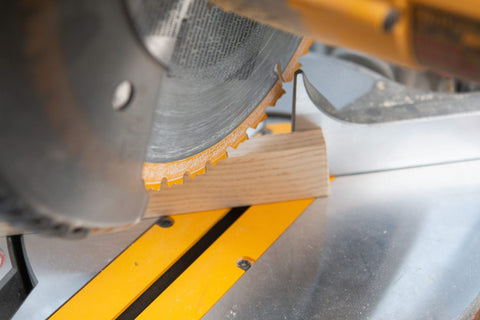
Step 2: Assemble the Frame
Carefully assemble the cut pieces of wood to create a rectangular or square frame. It is crucial to verify that the corners are perfectly square by using a carpenter's square. For added strength and stability, consider applying wood glue at the joints.

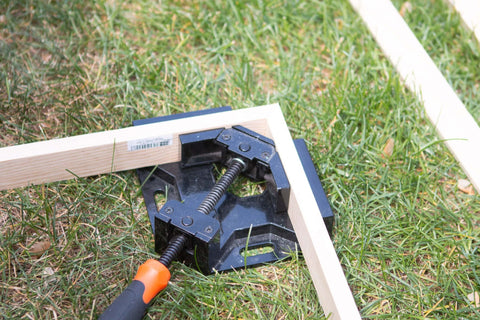
Step 3: Reinforce the Corners
For larger frames or frames subjected to substantial tension, reinforcing the corners is advisable. Attach corner braces or use screws to secure the corners firmly, preventing any potential warping.
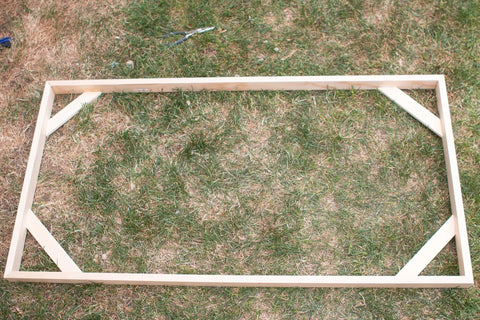
Step 4: Sand the Edges
To ensure a smooth and professional finish, sand the edges and corners of the frame. This step removes any rough spots or sharp edges and helps the canvas stretch evenly over the frame.
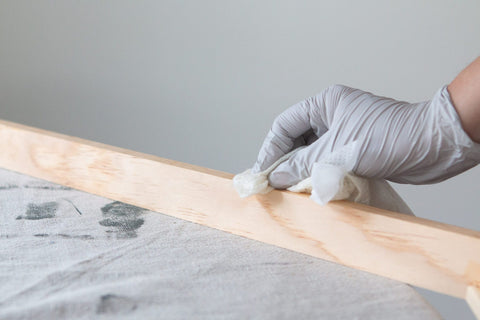
Step 5: Attach the Canvas
Lay the canvas fabric on a clean, flat surface. Place the frame face down on top of the canvas, ensuring that there is excess canvas extending beyond all sides of the frame.
Step 6: Stretch the Canvas
Starting from one side of the frame, fold the excess canvas over the frame and use canvas stretcher pliers (or your hands if preferred) to stretch and pull the fabric taut. Secure the canvas to the frame by placing staples at regular intervals along the edges.
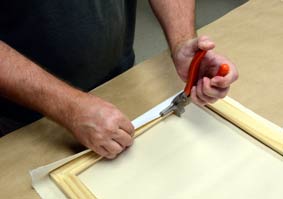
Step 7: Continue Stretching and Stapling
Progress around the frame, stretching the canvas and fastening it with staples. Even, consistent tensioning is critical to prevent wrinkles or uneven tension in the canvas.
Step 8: Trim Excess Canvas
Trim any surplus canvas fabric using scissors or a utility knife, leaving a neat and tidy edge.
Step 9: Optional: Add Tensioning Wedges
For larger frames or for those requiring precise tension adjustments, consider inserting canvas tensioning wedges into the corners. These wedges can be tapped into place to fine-tune the canvas tension over time.
Step 10: Finish and Prime
Once your canvas frame is complete, you can finish it with a layer of primer. This step prepares the canvas for painting. Sand any remaining rough spots if needed to achieve a flawless surface.
Choosing the Right Wood for Your Canvas Frame
The choice of wood for your canvas frame is a pivotal decision in the construction process. Different types of wood offer unique characteristics and qualities that can impact the longevity and aesthetics of your canvas frame.
Pine:
- Pine is a popular choice due to its affordability and ease of use.
- It is relatively lightweight, making it suitable for larger frames.
- However, pine is softer than some other wood types, which can make it more susceptible to dents and dings.
Cedar:
- Cedar wood is known for its natural resistance to decay and insects.
- It has a pleasant aroma and distinct reddish-brown color.
- Cedar is a good choice for outdoor or humid environments.
Oak:
- Oak is a dense and sturdy hardwood with a prominent grain pattern.
- It is highly durable and resistant to wear and tear.
- Oak frames are often chosen for their classic and timeless appearance.
Poplar:
- Poplar wood is lightweight and easy to work with.
- It is known for its straight grain and uniform texture.
- Poplar is a good choice for those seeking a balance between affordability and quality.
Selecting the Right Canvas Fabric
Choosing the appropriate canvas fabric is equally important for achieving the desired result in your canvas frame construction. Canvas fabric comes in various types and weights, each with its own characteristics:
Cotton Canvas:
- Cotton canvas is the most commonly used type of canvas for painting.
- It offers a smooth surface with a fine grain, making it suitable for detailed work.
- Cotton canvas is available in various weights, with heavier options providing more durability.
Linen Canvas:
- Linen canvas is prized for its strength and longevity.
- It has a distinct texture and is often preferred by professional artists for its quality.
- Linen canvas can be more expensive than cotton but is considered a top choice for serious artists.
Polyester Canvas:
- Polyester canvas is known for its stability and resistance to humidity and temperature changes.
- It is less prone to stretching or shrinking compared to natural
*Photo Courtesy thediyplaybook.com